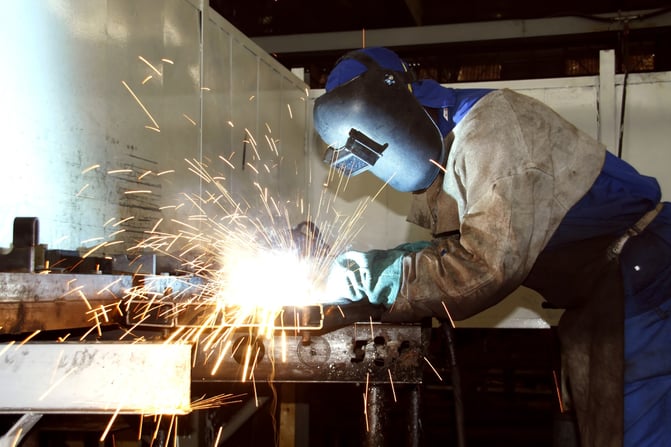Welding aluminum can be difficult, as the metal brings about unique challenges. Because of its unstable chemical composition, it can be easily broken up under stress. Its low melting point makes it likely to warp, crack, or break. Welders can also face issues with discoloration and feedability challenges. Because of these issues, it’s important to understand the best practices for welding aluminum to reduce the risk of problematic welds. Read below to learn about the best practices for welding aluminum.

Avoid Weaving Techniques
Weaving techniques are commonly used to weld steel. However, these techniques are not a good fit for welding aluminum. Instead, use a stringer bed to help ensure proper penetration and fusion. For aluminum GMAW, use higher heat inputs and fast travel speeds to help you stay in front of the puddle. Using a stringer bed over weaving techniques will help reduce the risk of weld distortion and ensure proper penetration.
Clean the Metal Before Welding
Removing oil, dirt, residue, and moisture before welding is essential to creating a high quality weld with aluminum. Thoroughly cleaning the base material will reduce the chance of porosity and help ensure the best results. Acetone or aluminum cleaner are the best choices for removing hydrocarbons that could be on the material’s surface. When prepping the weld joints, avoid blowing them with compressed air, which can introduce contamination from moisture and oils.
Remove the Oxide Layer
After cleaning the material, you should use a stainless steel brush to remove the aluminum oxide layer before welding. Be sure to use only a new brush or one that’s only been used on aluminum. Aluminum oxide has a much higher melting point than aluminum and therefore acts as an insulator that can cause arc start problems. In order to weld through the oxide layer, a very high temperature is required, which can cause burn-through on the base material. Because the oxide layer tends to hold moisture, it can also lead to porosity issues. To avoid these issues caused be the aluminum oxide layer, it’s best to thoroughly clean the aluminum to remove this layer.
Store Sheets Properly
Proper storage practices can help prevent porosity in aluminum welds. When possible, store aluminum sheets inside. If you must store them outside, be sure to stand them vertically rather than on top of each other to avoid trapping water in between the sheets. Without taking this step, the trapped water can contribute to the formation of thicker hydrated aluminum-oxide layer. When you must store aluminum sheets outdoors or in air conditioning, be sure to bring them inside before welding, preferably the day before. Bringing them inside before welding will allow the metal’s temperature to stabilize as well as preventing moisture in the air from creating condensation on the aluminum.
Use the Right Consumables
Some of the issues associated with welding aluminum stem from the consumables welders use. Be sure to use gas lines and hoses that are new or in very good condition to reduce the risk of porosity. Make sure lal hose connections are tight to make sure they are not pulling air into the line. You should also use the right liners and drive rolls for the job. Plastic liners and inlet guides are better choices than steel because stronger metals will abrade softer aluminum wire as it travels through the drive system and liner. U-groove drive rolls are standard for aluminum applications because other types of drive rolls can smash or distort the wire.
Monitor the Temperatures
To avoid issues in welding aluminum, use an aluminum filler metal guide or code to find the best preheating and interpass temperature ranges. Preheating can help reduce the thermal effects of section size when welding thick base metals or ones of varying thicknesses. However, you should keep preheating to a minimum for aluminum applications to avoid distortion. Extended time spent at elevated temperatures can also reduce the strength of the material and contribute to cracking. For these reasons, monitoring the temperature throughout the welding process for aluminum is essential to avoiding distortion and low quality welds.
CAMM Metals | CT Welding Company
It's crucial to do your research when choosing a metal fabrication, as not all companies are capable of completing the same quality of work. CAMM Metals has years of experience, honing our skills across the board to deliver a quality product and measurable bottom line value to our customers.



